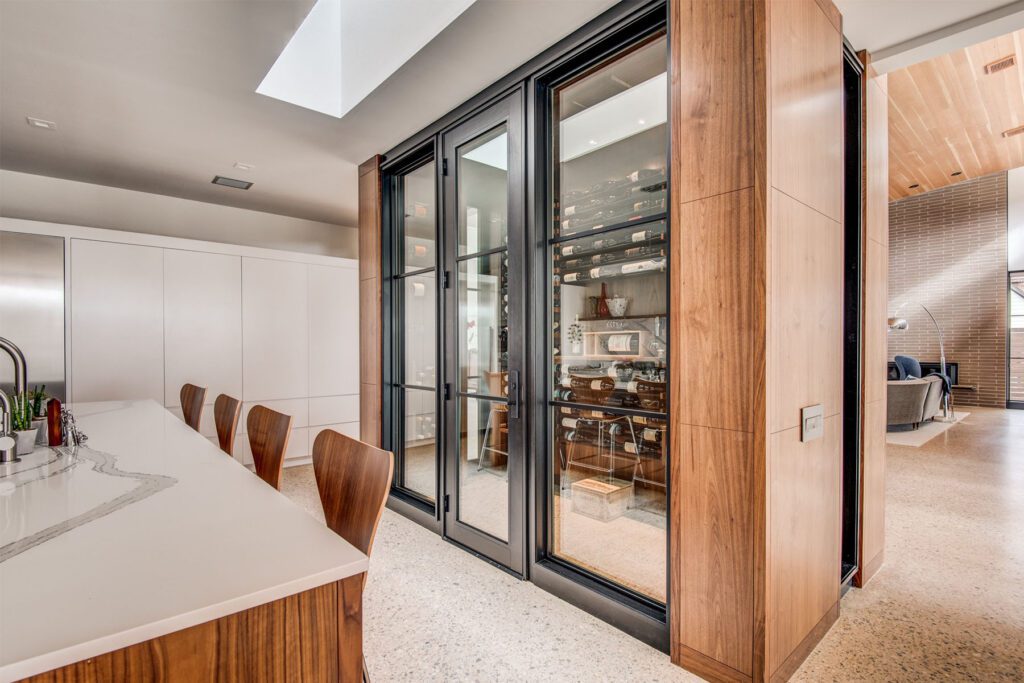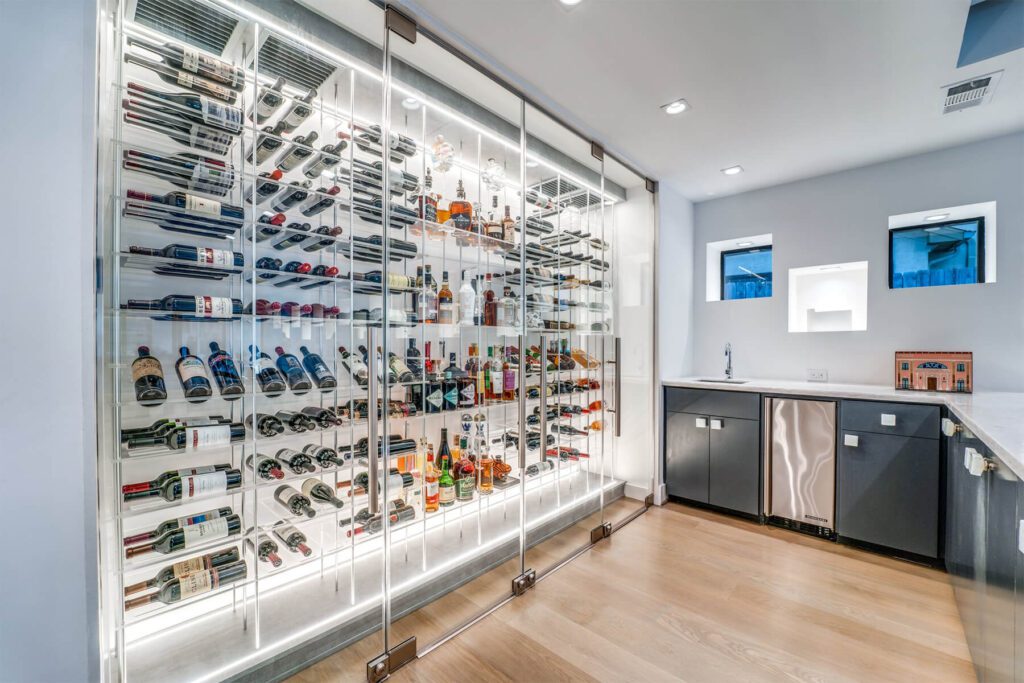Building a wine cellar or display is a dream come true for many homeowners, especially when their love of wine culture has blossomed. Fortunately, designing and building a wine room no longer requires ample basement space. Wine storage and aging can happen in a former closet, under a set of stairs, or even in the middle of a living room. Wine spaces can house modest collections of fewer than 100 bottles or maintain pristine conditions to vast collections of several thousand vintages. Essentially, today’s cooling technology has evolved to the point that nearly anything is possible as long as a wine lover has a budget, a team, and a vision. Here are seven residential wine room ideas to get you started.
1. Transform a Closet into a Wine Wall
As long as there is enough space to house cooling system mechanicals, a closet can be ideal for building a small wine cellar. Depending upon the depth of the closet, this type of application may allow a homeowner to walk into a cellar to peruse and select wine. The result is a sleek wine storage and aging space that is as aesthetically pleasing as functional.
2. Convert a Large Room Into a Wine Room
For wine lovers with extensive collections and homes, looking to the basement for optimal storage and aging may make sense. However, with the many ways to modernize the traditional dark wine cellar, another idea is to convert a formal living room, or other unused space, into a wine cellar. This elegant wine room stores and displays over 3,000 bottles, complete with Spanish Cedarwood and smoky grey wood planking. The long table and chandelier lend themselves to dining and wine tasting events.
The home was large enough to run ductwork from the evaporator into the room and from the condenser to the outside, so the team utilized a ducted solution. The result is a spectacular, quiet wine room perfect for entertaining and enjoying all aspects of wine culture.

3. Transform a Spare Bedroom
Almost any underutilized space can be transformed into a room for wine storage and aging. For example, when children leave the nest, it presents a prime opportunity to convert a bedroom into a customized wine cellar. This project features custom racking to display an extensive whiskey and bourbon collection alongside the wine. Several personalized elements like a wooden table made from an oak barrel create a unique and cozy space.
A ductless split unit maintains a pristine environment since the modest-sized room is near the outdoors but not large enough to conceal ductwork.
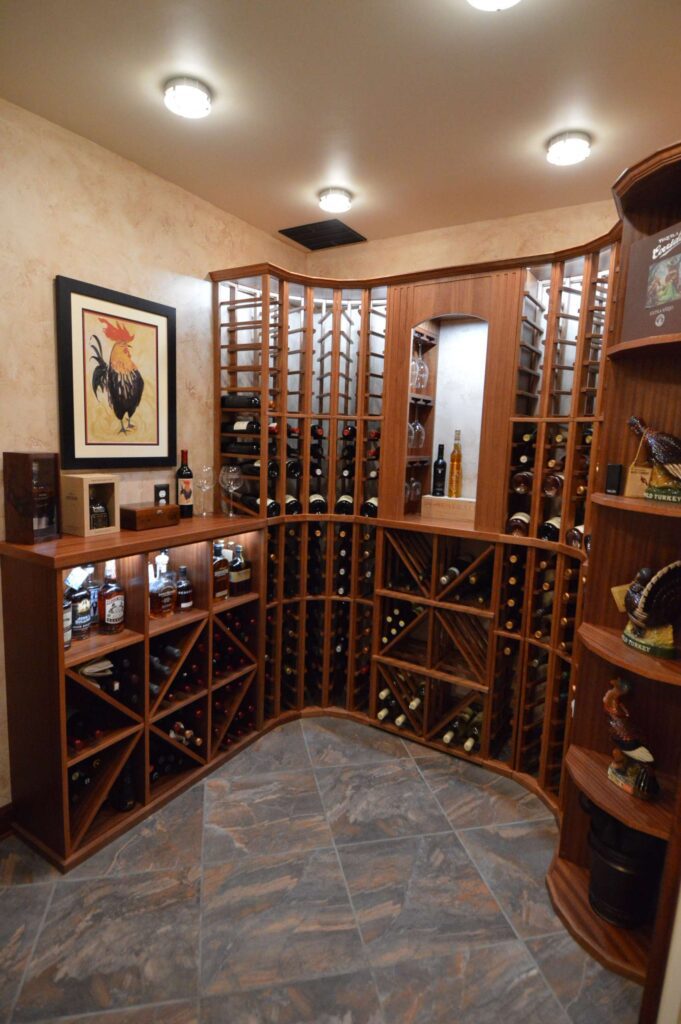
4. Understairs
With the right designer, contractor, and cooling solution, it is possible to execute a wine cellar under many sets of stairs. Take this application as an example: It features large glass walls that complement the contemporary style of the rest of the home. Even though it is a small space, wine lovers can step into the cellar and close the door behind them to contemplate with a friend the perfect vintage. Many racking options are available, from wood to metal to acrylic, to suit any preferences.
This project utilizes a ducted split system because there was not enough room for a self-contained unit and no place to vent condenser air. However, there was enough space for a long duct run to exhaust hot air to the outside.
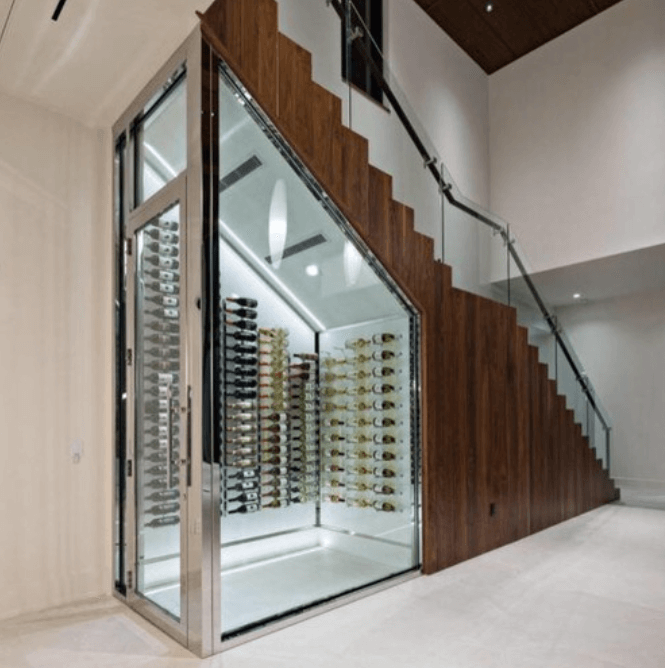
5. Focal Point of Living Space
Open concept spaces offer excellent opportunities to make a wine cellar the centerpiece of a home. This cellar is in the middle of the kitchen, dining, and living room and incorporates walnut panels, metal rods, and insulated glass windows to fit with the rest of the mid-century modern home. The cellar is large enough to accommodate bar seating within the space for wine tastings. The custom racking accommodates individual and large format bottles, as well as bulk storage.
This wine showroom operates with a smaller ducted wine cellar cooling solution that is tucked away above the ceiling.
6. The Centerpiece of a Room
Wine walls can be built to separate living spaces, and they can also serve as a focal point in any room used to entertain. This floating wine wall features clear acrylic racking and frameless floor-to-ceiling glass panels, and a door to match the modern look of the surrounding bar and lounge area. Light wood floors extend into the wine wall, and LED lights are used both inside and outside the space for continuity.
This luxurious wine wall is fitted with a self-contained ducted cooling system because there was space above the room for insulated flexible ductwork leading to a self-contained unit.
7. Traditional Basement Wine Cellars
Cool ambient temperatures and darkness do make the basement a logical place to store and age fine wines. Suppose you have your heart set on a traditional wine cellar. In that case, there are several options available depending upon your preferred design aesthetic and the amount of square footage you can dedicate to an application.
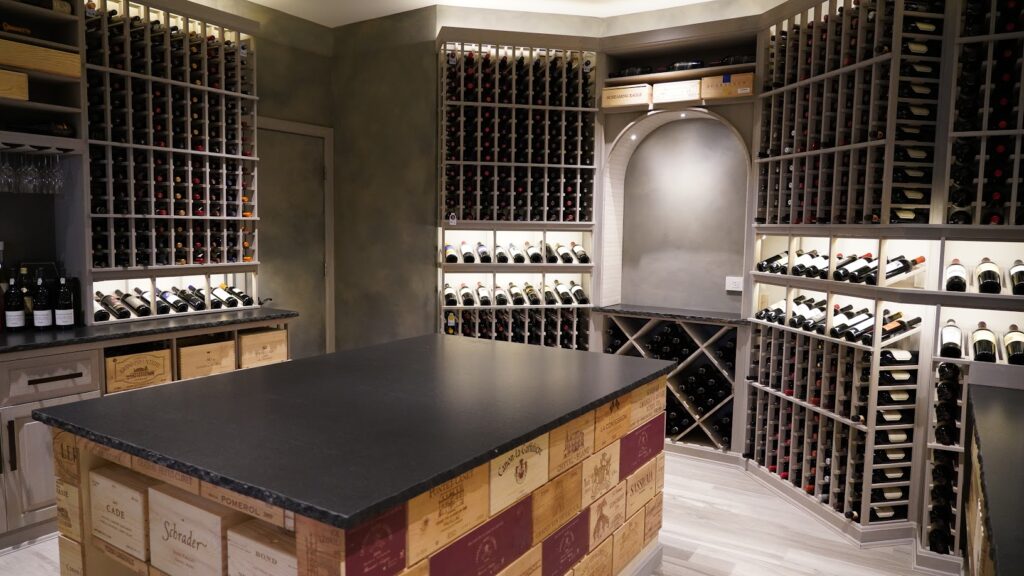
Create a Rustic Space
Brick and wood are often used to create cozy spaces for storing and enjoying wine. If an entire basement is devoted to a wine cellar, consider including a small bar with enough seating to sample wine with friends and shelving to store glasses and other supplies. This application (linked above) used glass doors to separate a bar seating area from the actual climate-controlled space without disrupting the view of the wine cellar.
A Cool, Modern Look
A dark grey wash and granite countertops lend themselves to a more sophisticated wine cellar. Custom racking can house extensive collections of several thousand bottles, and LED lights can be strategically placed to showcase exceptional vintages and create an elegant ambiance. This particular cellar from the Wine Enthusiast incorporated wooden crates for storage in the large center island and to add a personal touch.
It also features a ducted wine cellar system that only exposes a discreet grille within the cellar.
Smaller Basements Can Make Great Wine Cellars
A small basement space can be a perfect canvas for a lovely wine cellar. This 12-foot by 12-foot square room features stone columns, white oak, and travertine marble and can store several hundred bottles of wine. The cellar door was custom-made from repurposed wood and created an old-world look-and-feel to the space. LED lighting spotlights artwork and the stone columns and completes the mood of the cellar.
A through-the-wall unit maintains the optimal temperature and humidity in the small application.
As you can see, there are many ways to incorporate a wine cellar within your house or condo. In addition to design inspiration, executing a functional and elegant wine cellar requires knowledge about the essential construction elements, so you select the best location within your home. It is also vital to have a strong collaboration between contractor and designer before you break ground.

